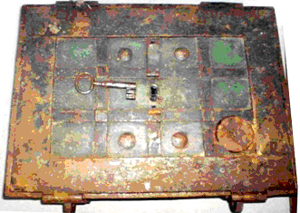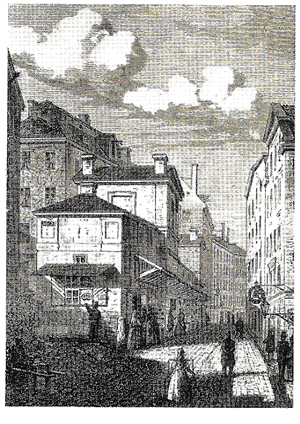Money chest sales were handled by the putters-out (merchants), mainly in Eskilstuna and Stockholm, but in other locations too. During the nineteenth century some goods were sold at street stands in different parts of Stockholm. Money chests were probably made to order.
The putting-out system, as was previously mentioned in conjunction with the south German cities, essentially functioned from the sixteenth century onwards. In the book Järnets och smedernas Eskilstuna (Iron and Blacksmiths in Eskilstuna) Knut Hellberg tells about nineteenth-century master blacksmiths who had no resources Eskilstuna came to be completely dependent on their putters-out and “had to work hand to mouth”. These merchants, who traded in the city, provided advance payment to the master craftsmen in the form of raw materials and necessities, such as flour, meat, herring, butter, salt, spices and fabric. In return, the master craftsmen had to give the merchants all of the ironwork they completed – from which the merchants profited. Cash was seldom used between merchant and master.
Another form of sales that grew increasingly strong involved exhibitions of handicrafts and industrial products. Long before the large world exhibitions in the middle of the nineteenth century in London and Paris, exhibitions were held in several cities in Sweden. Factories and crafts associations competed to display their products.
Collectables
Many of the nineteenth century money chests have become popular collector’s items. As was previously noted, they are rather simple in design compared with those produced in earlier centuries, and they are priced accordingly.
The post offices are gone, but the money chests remain in some banks, displayed as memories of a time with a more hands-on approach to cash. Many chests were sold to private individuals or donated to local community centers.
 |
| Example of what can happen in a damp environment. In this case all rust must be carefully removed and the paint restored. This type of iron object survives best in a dry indoor climate. |
 |
Sheds in the 1860s on Österlånggatan in Gamla Stan (the Old Town) in Stockholm.
Wood engraving, O A Mankell |